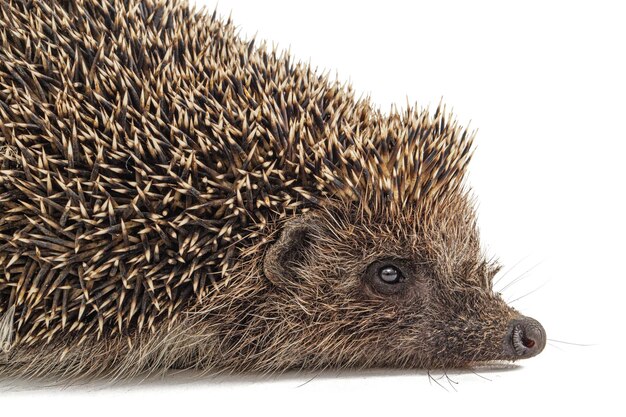European Hedgehog (Erinaceus europaeus) Isolated on White Background – Free Stock Photo, Download Free
Introduction to the Common Hedgehog
The common hedgehog, also known as the European hedgehog or West European hedgehog, is a charming little creature found in various habitats across Europe. Known scientifically as Erinaceus europaeus, this delightful mammal is easily recognized by its spiny coat and unique features.
Physical Characteristics
The common hedgehog is a small, nocturnal animal with distinct physical traits. Here are some key features:
- Spines: The hedgehog's back is covered in about 5,000 to 7,000 spines, which provide excellent protection against predators.
- Size: Typically, these hedgehogs measure around 24 to 30 centimeters in length.
- Color: Their fur often varies from brown to gray, blending well with their natural environments.
Habitat and Distribution
The common hedgehog prefers a variety of habitats, including:
- Woodlands
- Grasslands
- Gardens
- Farmlands
This adaptability allows them to thrive in both rural and urban settings, although they are most commonly found in areas with plenty of undergrowth for shelter and food.
Diet
Hedgehogs are known as insectivores, meaning they primarily feed on insects. Their diet can include:
- Beetles
- Worms
- Slugs
- Snails
In addition to insects, they may also munch on fruits and vegetables, particularly when these are in season.
Behavior and Lifestyle
Common hedgehogs are solitary animals that are most active at night. They have several interesting behaviors, such as:
- Hibernation: In colder months, hedgehogs can hibernate, curling up into a ball to conserve heat.
- Communication: They communicate through a series of snuffles, grunts, and other sounds.
- Defensive Mechanism: When threatened, a hedgehog will curl into a tight ball, showcasing its spines for protection.
Conclusion
The common hedgehog is a beloved species that plays a vital role in our ecosystems. Its presence in gardens and natural settings signifies a healthy environment. Understanding these intriguing little mammals helps in appreciating the biodiversity around us.












